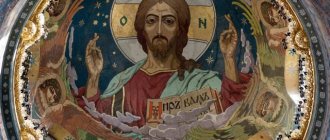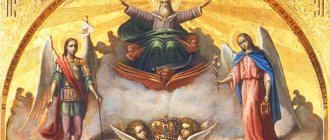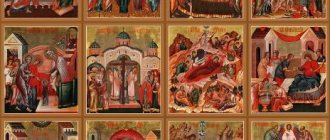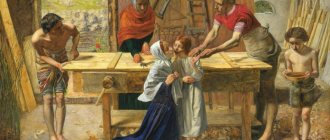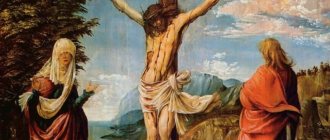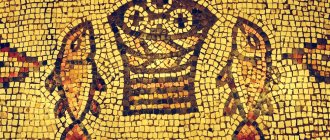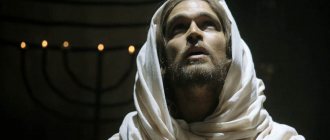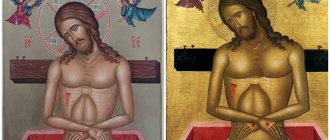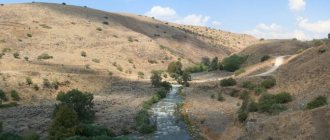December 26, 2016Art, History, Anthropology
How the main characters of this story looked in different eras, what sources the artists cited, what influenced the choice of details and how different people saw the same event at different times: we explain using the example of six works
Author Anna Kiseleva
Christmas is one of the most popular subjects of European painting, which changed along with it. In medieval paintings, artists recount stories from Scripture in detail to illiterate parishioners. By the 15th century, attention shifts to Mary, the baby, and the miracle that took place. Many symbolic details help to unravel the author's intention. In 17th-century painting, the main thing is light and lighting effects: a cave or stable is depicted in twilight, while the figures gathered at the manger appear in rays of light. In later eras, artists were less interested in traditional religious subject matter. They break away from tradition and paint their own image of Christmas.
Hugo van der Goes. Adoration of the Magi
XV century, Hermitage
The scene of the three eastern sages worshiping the newly born Baby is depicted on the central door of the triptych. In the background are “The Adoration of the Shepherds” and “The Journey of the Magi.” The episode with the circumcision of Christ is written on the left door, and “The Massacre of the Innocents” is written on the right door.
Hugo van der Goes. Adoration of the Magi. XV century, Hermitage
Pseudo Pier Francesco Fiorentino. Adoration of the Madonna and Child Christ. 2nd half of the 15th century, Pushkin Museum
Pencil drawing of the crucifixion of Jesus Christ, drawing diagram step by step
Jesus Christ gives people hope, trust and faith. Looking at the images of the crucifixion of Jesus Christ, you really believe that he died for our sins. Drawing such events requires the author to understand and worship a truly great sacrifice.
Option #1
There are six specific steps, following which you can create a suffering drawing of the Almighty.
- To begin with, determine the shape of the body. Start with a circle for the head and an elongated torso. Once the base is created, limb lines are added for the neck, arms and legs.
- Move on to a sketch of shoulder-length hair, a sketch of a beard and a crown of thorns. The shape of the torso and arms is rounded.
- When the upper part of Jesus' body is ready, you can draw the shape of the cross. Having finished the outlines of the arms, proceed to the waist, loincloth and legs.
- At the next stage, elongated wings are drawn. Add fabric with fold lines to the lower back. Then they go down, where they finish drawing the lower part of the cross.
- Feathers are added to the large angel wings and the original lines that were drawn in the first stage are erased.
- The sketch of the drawing is ready, although you can add a few shades.
Option No. 2
Before you start drawing Jesus, decide on the size of the figure. Accordingly, the silhouette is selected based on the height of the sheet. This is necessary to maintain proportion between the sheet and the actual drawing.
- First, draw a cross. It will serve as the basis for the body. Do not apply too much pressure with the pencil so that the guides can be easily erased after finishing the work.
- Determine the space that the drawing will occupy vertically and horizontally. Jesus' arms will be extended to the sides. Hence, a good paper size is required. Draw the head and hands. At the top of the vertical line, make an oval for the head.
- Draw a large rectangle that will serve as the torso. Then the details of the hair, eyes, nose, lips and beard are drawn.
- They begin to detail the drawing from the hair. To do this, draw wavy or straight lines starting at the top of the head and falling to the shoulders.
- Don't worry if the strands don't look straight.
- They work with the face. Eyebrows are drawn a little below the forehead, and under them - eyes (necessarily with a pupil), adding two stretched curved lines. Then start sketching out the nose and mouth.
- The lips should be slightly curved upward, this is how the masters show the smile of Jesus. A mustache and beard are made around them. The first vegetation is shaded vertically, and the second is done horizontally. The beard starts from the lips and extends to the ears. It looks like a triangle pointing down.
- Then make two ovals at the end of the arms. Later they will be used to draw fingers that will be curved upward.
- Long lines depict a robe, not forgetting to make extra strokes for the folds on the clothes. Darken or shade on fold lines, for example, on folds. Form fingers and pass once again along the contour of the drawing. Remove excess details with an eraser.
- Option #3
Step by step video tutorial for drawing the crucifixion of Jesus. The author filmed it in some detail, so it is quite possible to repeat the above technique.
Filippino Lippi. Adoration of the Christ Child
around 1480, Hermitage
One of the first Italian artists to use a landscape that was in tune with the mood of the characters. The Madonna and angels flying down from heaven worship the Child on a lawn strewn with flowers, which is surrounded by a fence and symbolizes paradise - after all, the Garden of Eden must have a fence!
Filippino Lippi. Adoration of the Child Christ. Around 1480, Hermitage
Jan Jost Kalkar (follower). Christmas (Holy Night). Around 1520, Pushkin Museum
Drawings about Jesus Christ
The pictures of Jesus Christ are very convincing. They not only give a visual idea of a person, but also speak about his essence.
It would seem that the portrait shows something quite obviously, but the author cunningly “hides” a deep meaning in it. Through a certain expression or pose, an additional object (a crown of thorns) or the use of certain colors, the artist reveals the soul of a great man.
Often the work becomes iconic, representing a group of people from a specific time period who share something in common, such as the birth of Jesus.
Even one cradle with the star of Bethlehem at the head speaks of the birth of our Savior.
Sometimes it seems that the face of Christ has a stern or frowning look, but this is a mistaken opinion. Christ is our salvation and His gaze is always loving.
When depicting the Almighty, it is important to correctly draw the eyes - the gateway to the human soul.
Sometimes one eye is depicted facing the viewer, and the other is turned slightly to the side. They say that this is how Jesus views his destiny.
It is through the shape of the neck that the authors convey the full breath of God and the holy spirit.
The Almighty came to our earth to save and protect all humanity.
Pieter Bruegel the Younger. "Adoration of the Magi"
2nd half of the 16th century, Hermitage
A copy of a painting by the great Pieter Bruegel the Elder, carefully executed by his son. The gospel scene in the lower left corner is difficult to find. The canvas is mainly dedicated to winter everyday life in Holland - for example, a water hole is depicted on the ice from which the townspeople draw water.
Pieter Bruegel the Younger. Adoration of the Magi. 2nd half of the 16th century, Hermitage
Rembrandt van Rijn. Holy Family. 1645, Hermitage
Paolo Veronese. Adoration of the Magi
1570s, Hermitage
The Italian artist uses a New Testament plot to depict pomp and luxury: expensive fabrics, feathers, draperies, antique architecture. Next to the cow and donkey, the true owners of the manger where Jesus was born, camels are written on which the Magi arrived. The muzzles do not look like real ones: the author did not write from life.
Paolo Veronese. Adoration of the Magi. 1570s, Hermitage
Matthias Stomer. Adoration of the Child. 2nd quarter of the 17th century, Saratov State Art Museum named after A.N. Radishcheva
Mosaics of the Palatine Chapel in Palermo
Christmas. Mosaic of the Palatine Chapel. 1160–1170 Wikimedia Commons
When the Roman Emperor Augustus announced a general census, its inhabitants went to the cities where they were born. Among them were Joseph and Mary. They went to Bethlehem, but there were no rooms in the hotel, so they had to spend the night in a certain room for livestock. That's where Jesus was born. Mary swaddled the baby and placed it in the manger. At this time, angels appeared to the shepherds, announcing to them the Nativity of the Son of God, and the star showed the wise men the way to the manger of the King of the Jews. This is how the evangelists Matthew and Luke briefly describe Christmas. But in early Christian and medieval depictions of the Nativity, characters appear about whom nothing is said in the Gospel. These are two midwives, Zeloma and Salome, and an ox and a donkey. They are told about by legends that are not included in Scripture - the apocrypha and medieval legends based on them.
On the mosaic of the Palatine Chapel in Palermo, an ox and a donkey look into a manger, and Zeloma and Salome bathe a newborn. When Mary went into labor, Joseph went for the midwives, but it was too late: by the time they arrived, Jesus had already been born. The cave was filled with bright light. Zeloma examined Maria and realized that she remained a virgin, but Salome did not believe her. She was punished for her doubts: the midwife’s hand withered, and only prayer and touching the diapers healed her. Already in the 4th century, this legend caused discontent in the church, and yet midwives continued to be depicted.
Joseph took an ox and a donkey to Bethlehem: the ox was for sale, and Mary rode on the donkey. Unlike the midwives, this plot did not raise any complaints: it is difficult to imagine Christmas in a barn without animals. The animals not only recalled the modesty and simplicity of the first days of Jesus' life - their appearance was a confirmation of the words of the prophet Isaiah: “The ox knows his owner, and the donkey his master’s manger, but Israel does not know, My people do not understand” (Is. 1:3).
Rutilio Manetti. Adoration of the Magi
early 1620s, Yekaterinburg Museum of Fine Arts)
The Bible does not say how many wise men came to Bethlehem to worship the Infant Christ. Therefore, the Armenian and Syrian churches, for example, believe that there were 12 of them. And in Catholicism there are traditionally three of them. They represent the three stages of human age, so the paintings usually show an old man, a mature man and a young man.
Rutilio Manetti “Adoration of the Magi” (early 1620s, Yekaterinburg Museum of Fine Arts)
Bartolome Esteban Murillo “Adoration of the Shepherds” (1646–1650, Hermitage)
Petrus Christus. "Christmas"
Petrus Christus. Christmas. Around 1450 National Gallery of Art, Washington
Petrus Christus divides the composition into three plans. The first shows an arch with scenes from the book of Genesis. On the pillars, Adam and Eve bite off the fruit of the tree of knowledge. In archivolts An archivolt is a decorative element located on the semicircle of the end of the arch. In the Middle Ages, archivolts were often covered with reliefs. - expulsion from paradise, the labors of Adam and Eve The labors of Adam and Eve - a plot in religious painting: “Adam and Eve plowing the earth with a spinning wheel, working in the sweat of their brow” (Gen. 3:19). and the murder of Abel. In the last scene, the already middle-aged Adam and Eve see off one of their sons. This refers to either the expulsion of Cain to the country of Nod, or the story of their third son Seth. According to the apocryphal Gospel of Nicodemus, written around the 5th century, Seth went to heaven to get a branch of the tree of knowledge to heal the aging Adam. After the death of his father, he planted a branch on his grave, and thousands of years later a tree grew there: the cross on which Christ was crucified was made from it. This story is also given in the Golden Legend, the most famous collection of Christian legends in the Middle Ages, compiled in the 13th century. If the last relief is indeed dedicated to Seth, the image opposite the Expulsion from Paradise hints at the coming salvation.
The Nativity scene itself occupies the middle ground. It is important to pay attention to two seemingly inconspicuous details: the shoes lying next to Joseph, and the branch with fresh leaves sticking out of the beam. They refer to two Old Testament stories, in which in the Middle Ages they saw indications of the virgin birth and Christmas. Firstly, this is the story of the rod of the high priest Aaron, which blossomed as proof of his right to serve God, and of the burning bush - a bush engulfed in flames, but not burned, from which God spoke to Moses. The rod, which miraculously sprouted shoots, and the bush untouched by fire, anticipated the immaculate conception. The placement of the branch directly above the baby prompted the viewer to reflect on its meaning and was reminiscent of the shoots that Aaron's staff provided. This is also hinted at by the consonance of two Latin words: virgo (maiden) and virga (branch).
Joseph's shoes remind the viewer of Moses, who took off his shoes as he approached the bush. In popular illustrated Bibles, the Nativity, Aaron's rod, and Moses in front of the burning bush were often depicted side by side. Christus's symbolism is somewhat more complex: most likely, he is counting on an educated and pious viewer.
The background is dedicated to the future - the death and resurrection of Christ. Behind the stable you can see the city of Bruges; the Jerusalem Church, built in Bruges in 1428, stands out among the buildings. There were quite a few such churches in Europe, their plan and dedication were reminiscent of the Holy Sepulcher in Jerusalem. Christus completes his narrative with the image of the tomb.
